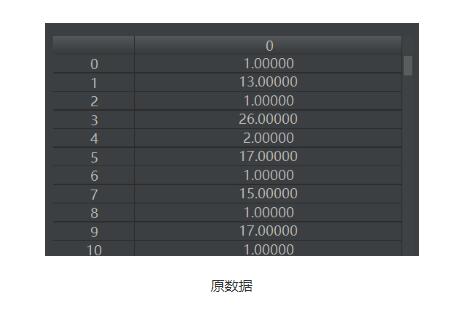python 自動(dòng)監(jiān)控最新郵件并讀取的操作
我就廢話不多說了,大家還是直接看代碼吧~
#zmail庫:可以用幾行代碼幫我們收取一封郵件import zmail#輸入賬號(hào)和密碼server=zmail.server(’13163964546@qq.com’,’jie110341’)#獲取最新的一封郵件mail=server.get_latest()#讀取郵件#zmail.show(mail)#讀取郵件的部分內(nèi)容print(mail[’subject’])......#讀取附件 郵件 存放路徑 如果有同名文件則覆蓋zmail.save_acctachment(mail,target_path=None,overwrite=True)
需要在電腦上下載zmail庫
補(bǔ)充:Python郵箱實(shí)施監(jiān)控電腦
我就廢話不多說了,大家還是直接看代碼吧~
import smtplibimport poplibimport emailfrom email.mime.application import MIMEApplicationfrom email.mime.multipart import MIMEMultipartfrom email.mime.text import MIMETextfrom email.header import decode_headerdef send_email(account, password, email_title, send_text='', file_names=None, file_dir='.'): msg = MIMEMultipart() # msg = MIMEText(HTML, ’html’) -- 只能發(fā)送文本內(nèi)容 content = MIMEText(send_text, 'plain', 'utf-8') msg.attach(content) # 文件類型 if isinstance(file_names, list): for file_name in file_names: send_file_path = file_dir + '/' + file_name part = MIMEApplication(open(send_file_path, ’rb’).read()) part.add_header(’Content-Disposition’, ’attachment’, filename=file_name) msg.attach(part) elif isinstance(file_names, str): send_file_path = file_dir + '/' + file_names part = MIMEApplication(open(send_file_path, ’rb’).read()) part.add_header(’Content-Disposition’, ’attachment’, filename=file_names) msg.attach(part) # msg[’from’],msg[’to’]接收端顯示的發(fā)件人與收件人 msg[’from’] = '奧巴馬@163.com' msg[’to’] = account msg[’subject’] = email_title try: server = smtplib.SMTP() server.connect(’smtp.163.com’) server.login(account, password) # from_addr:發(fā)送地址; to_addrs:接收地址(字符串列表) server.sendmail(account, msg[’to’].split(), msg.as_string()) except Exception as e: print(e)# 獲取郵件標(biāo)題def get_email_subject(addr, password): # 設(shè)置連接網(wǎng)址,獲取pop3協(xié)議的郵件讀取對(duì)象 read = poplib.POP3(’pop.163.com’, timeout=3600) # 輸入郵件地址與郵件登錄密碼 read.user(addr) # 163郵箱用戶名 read.pass_(password) # 163郵箱設(shè)置中的客戶端授權(quán)密碼 # allEmails = (totalNum, totalSize) # 讀取郵件信息(郵件總數(shù),郵件尺寸) total_num, total_size = read.stat() # top(which,howmuch) # 獲取最新的一封郵件(第幾封郵件,獲取多少封) top_email = read.top(total_num, 1) # print('***** start *****n接收的數(shù)據(jù)為: {}n***** end *****n'.format(top_email)) # # print('***** start *****n[解碼前]獲取的初始郵件內(nèi)容: {}n***** end *****n'.format(top_email[1])) # 解碼郵件信息,將解碼后的郵件信息存入tmp tmp = [] for s in top_email[1]: tmp.append(s.decode()) # print('***** start *****n[解碼后]的郵件內(nèi)容為: {}n***** end *****n'.format(tmp)) # 將解碼后的郵件內(nèi)容拼接為字符串 email_str = ’n’.join(tmp) # 將字符串類型解析為Message類型 message = email.message_from_string(email_str) # print('***** start *****n' # '[解碼前]的郵件字符串內(nèi)容為: [數(shù)據(jù)類型]{}n{}n' # '--------------------------------------------n' # '[解碼后]的郵件字符串內(nèi)容為: [數(shù)據(jù)類型]{}n{}n' # '***** end *****n' # .format(type(email_str), email_str, type(message), message)) # 獲取郵件主題 subject_str = message[’subject’] # print('***** start *****n[解碼前]郵件標(biāo)題: {}n***** end *****n'.format(subject_str)) subject = decode_header(subject_str) # print('***** start *****n[解碼后]郵件標(biāo)題: {}n***** end *****n'.format(subject)) content = subject[0][0] enc_type = subject[0][1] if enc_type: subject_decode = content.decode(enc_type) else: subject_decode = content return subject_decode, read, total_num
以上為個(gè)人經(jīng)驗(yàn),希望能給大家一個(gè)參考,也希望大家多多支持好吧啦網(wǎng)。如有錯(cuò)誤或未考慮完全的地方,望不吝賜教。
相關(guān)文章:
1. python實(shí)現(xiàn)讀取類別頻數(shù)數(shù)據(jù)畫水平條形圖案例2. python中PyQuery庫用法分享3. python操作數(shù)據(jù)庫獲取結(jié)果之fetchone和fetchall的區(qū)別說明4. CSS3實(shí)現(xiàn)動(dòng)態(tài)翻牌效果 仿百度貼吧3D翻牌一次動(dòng)畫特效5. PHP獲取時(shí)間戳等相關(guān)函數(shù)匯總6. php5.6不能擴(kuò)展redis.so的解決方法7. php使用正則驗(yàn)證密碼字段的復(fù)雜強(qiáng)度原理詳細(xì)講解 原創(chuàng)8. Ajax實(shí)現(xiàn)頁面無刷新留言效果9. AJAX實(shí)現(xiàn)數(shù)據(jù)的增刪改查操作詳解【java后臺(tái)】10. ASP.NET MVC前臺(tái)動(dòng)態(tài)添加文本框并在后臺(tái)使用FormCollection接收值

 網(wǎng)公網(wǎng)安備
網(wǎng)公網(wǎng)安備